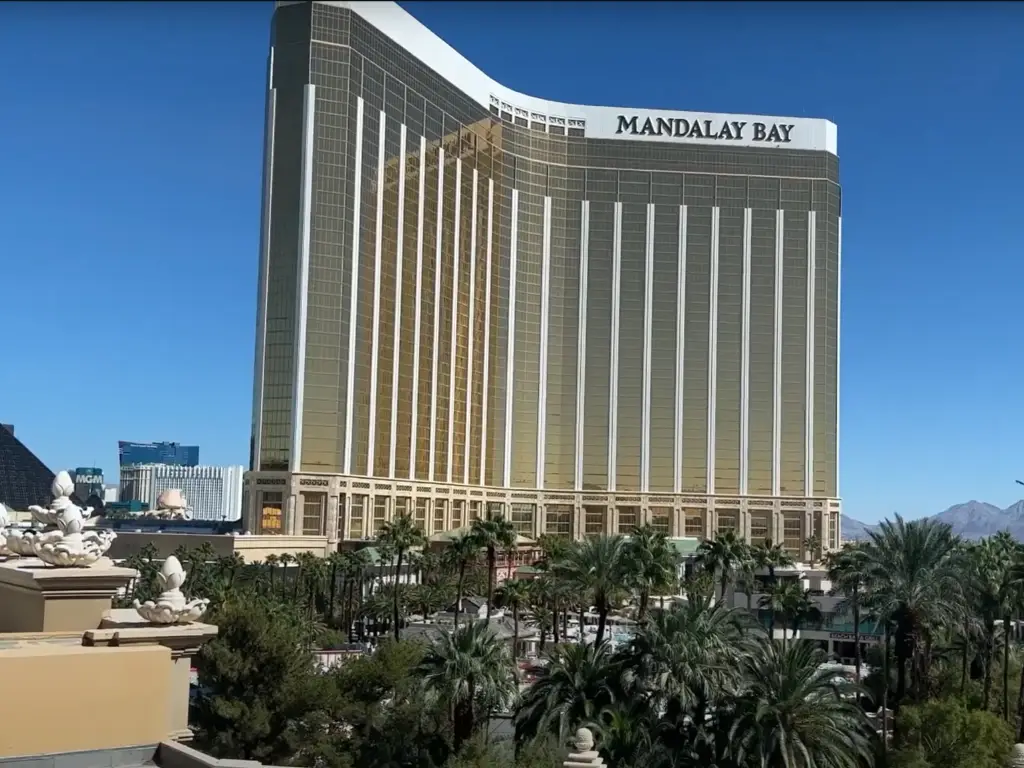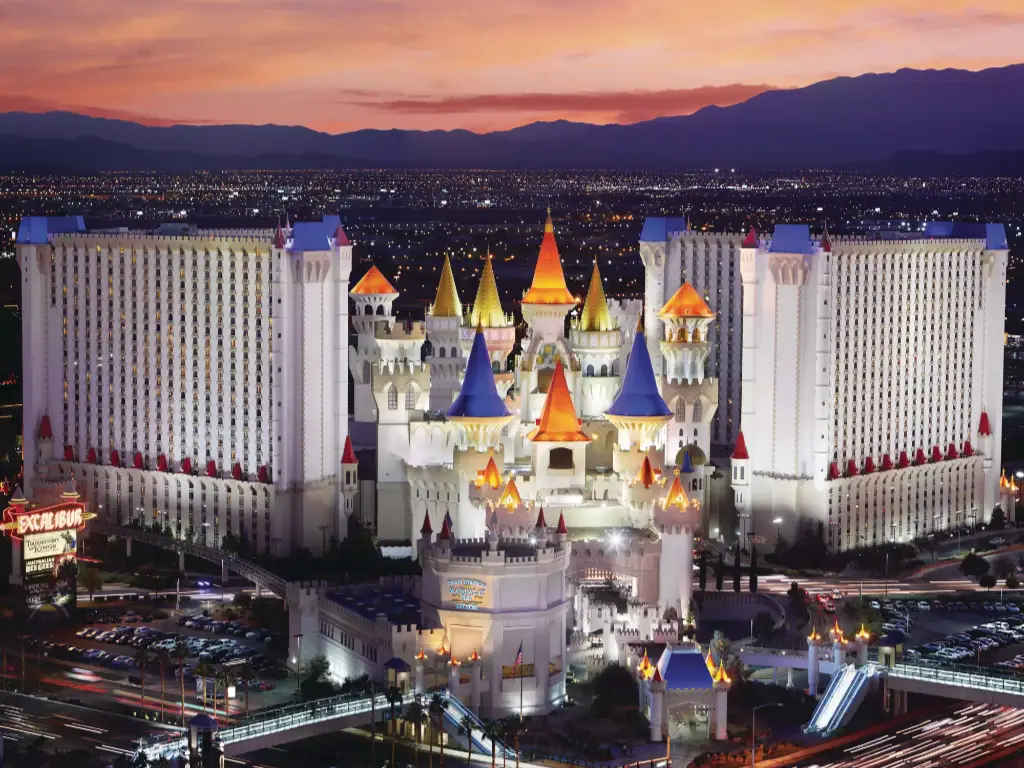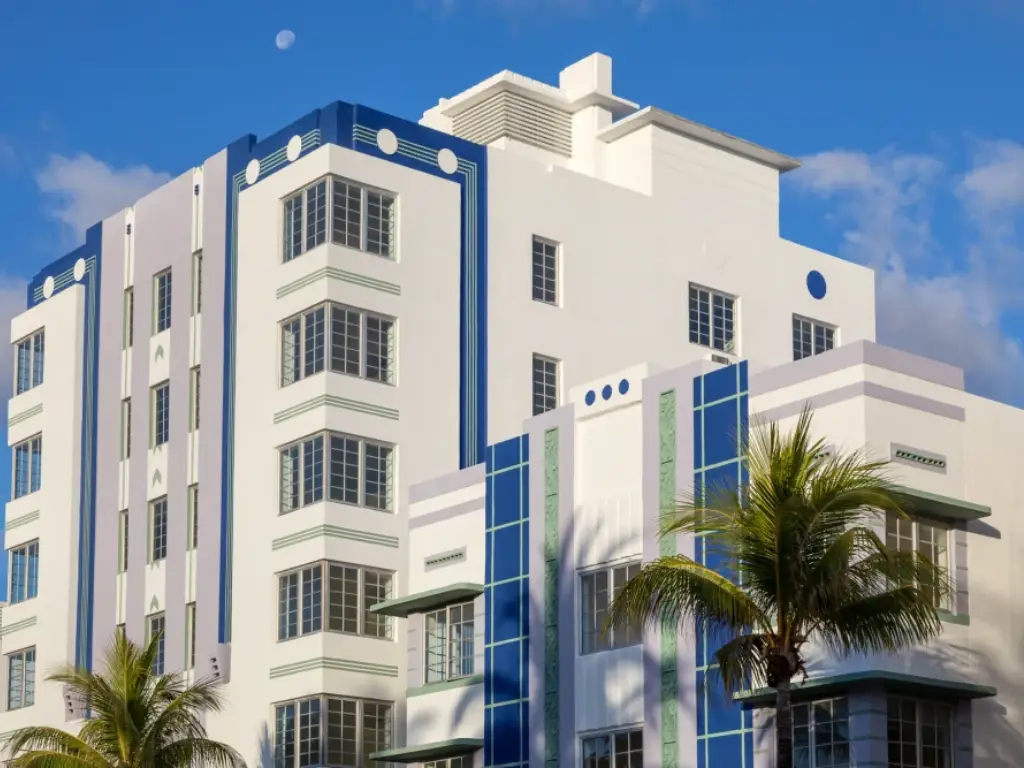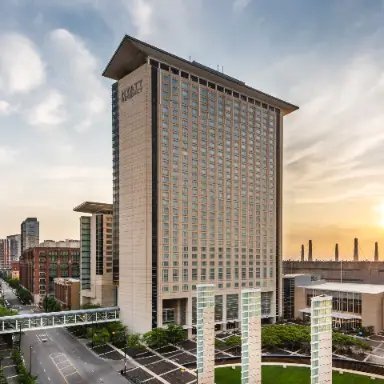While modern businesses have become more connected and competitive than ever, trade shows still serve as an excellent way for networking, doing business, and elevating a brand. Just showing up to a trade show with a sign and ready to shake hands is not nearly enough. Many businesses spend vast sums of money only to have their efforts vanish like smoke in a crowded hall. Why? Because there is much more to setting up a booth than putting up a physical structure. It requires meticulous planning, deep insight into human behavior, and much more. In this guide, I will help you understand the building blocks of a great exhibition, and make your trade show experience far more impactful than just being present. This is the best way to ensure your efforts lead to tangible results and even a fun way to engage with your audience.
Why Clear Objectives Drive Booth Success
Think of your trade show booth as a magnifying glass focusing your company’s intent. If that intent is blurry, the results will be equally as blurry. Reports show that exhibitors who lack objectives often experience a return on investment drop of more than 30% compared to their goal-oriented counterparts. It isn’t just the money that’s wasted, the time and effort invested will also require a significant opportunity cost.
Ensuring that your investment pays off requires following the SMART framework, which stands for specific, measurable, achievable, relevant, and time-bound.
- S (Specific): Setting vague goals such as “increased sales” is unhelpful. Instead, focus on tangible outcomes such as, “collect 200 high-quality sales leads from decision makers.” High-quality means meeting certain standards like budget, authority, need, and timeline (BANT).
- M (Measurable): How are you going to track success? For lead generation, there should be a system in place to track captured leads, their qualification level, and the conversion rate after the show. For brand awareness, we can analyze the brand perception and social media mention surveys before and after the show.
- A (Achievable): Your targets should be realistic based on your resources, the expected attendance for the show, and historical data. Setting goals that are too easy will not inspire effort while too difficult will lead to failure.
- R (Relevant): Trade show goals must align with the business as a whole. If the company’s aim is to introduce a new product, the purpose of the booth should not be generic lead generation, but rather aligned with the new product launch.
- T (Time-bound): Set specific deadlines not only for the show, but also for follow up activities. For example: “achieve 10% of leads converted to sales opportunities within 30 days post-show.”
Marketing and exhibition specialists emphasize the importance of setting goals, as clear objectives become the North Star for every other decision made, whether it is the booth’s design, staff training, or the follow up strategy. Without this clarity, energetic efforts are likely to be misguided.
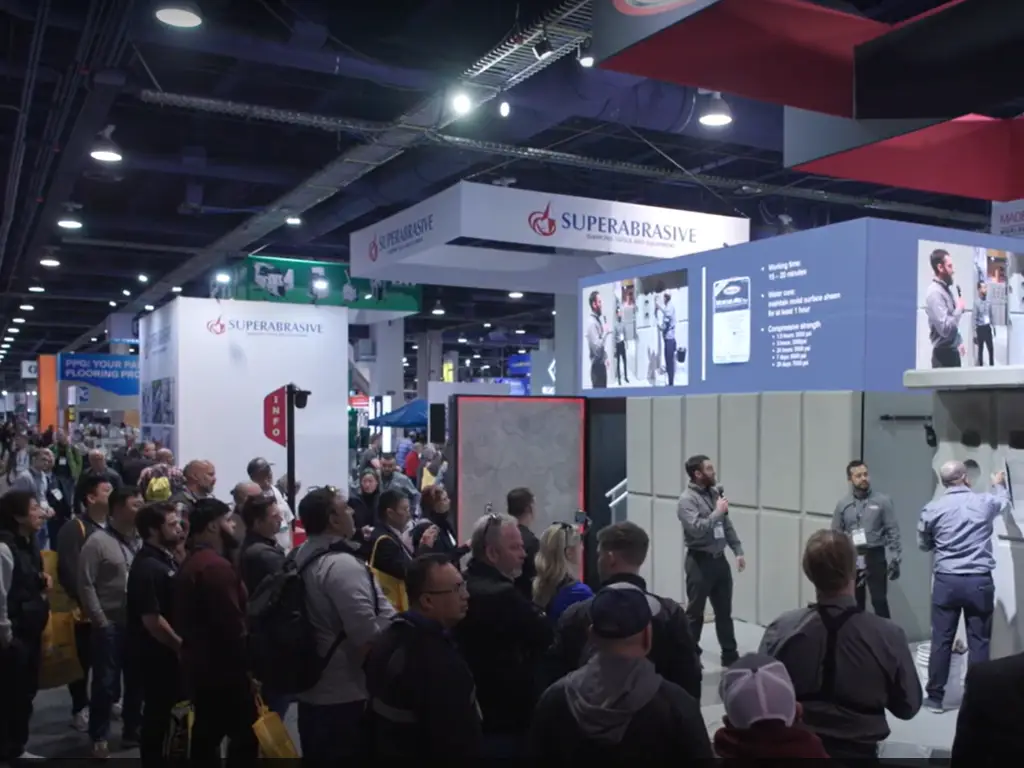
Identifying Your Target Audience & Choosing the Right Show
Knowing whom you want to reach is as important as understanding what you hope to achieve. Your target audience is not an anonymous group of people; they are distinct individuals with certain needs, problems, and goals. Understanding these details is key when designing a booth for a trade show. Their persona dictates the booth’s design, the level of engagement that is included, and the vocabulary that your team will use. By focusing on these potential customers, you can tailor your approach for maximum impact at your next event.
To understand your audience better, create carefully crafted buyer personas. These are not just demographics and include:
- Industry and Role: What sector do they operate in and what is their role in the company? Are they decision makers, influencers, or end users?
- Pain Points and Challenges: What problems does your product or service resolve?
- Interests and Motivations: Why are they coming to the trade show? What information are they looking for?
- Decision-Making Power: Are they allowed to confirm orders, or only purchase upon influence?
With all of these insights, you can carefully choose the trade show that best meets your goals. Not every show is equal, and a mismatch can reduce even the most beautiful booth to uselessness.
Here’s a checklist to help you decide which trade shows to attend:
| Selection Criteria | Key Considerations |
| Trade Show Theme & Product Fit | Does the show’s focus directly align with your offerings? Is your solution relevant to the attendees’ primary interests? |
| Audience Quality & Quantity | Do the attendee demographics match your target buyer personas? Is the expected attendance sufficient to meet your lead generation goals, and are they the right kind of attendees? |
| Competitor Presence | Are your main competitors exhibiting? This can be an opportunity (to show differentiation) or a challenge (to stand out). |
| Historical Data & Reputation | Review past attendance figures, exhibitor testimonials, and attendee feedback. Has the show grown? Does it have a reputation for delivering value? |
| Organizer’s Credibility | Is the trade show organizer reputable and experienced? Do they provide strong marketing support for exhibitors? |
| Ancillary Services & Support | What support does the show offer (e.g., promotional opportunities, lead scanning technology, exhibitor lounges, educational sessions)? |
Designing for Impact: Crafting Your Eye-Catching Booth Layout
After setting goals and picking a show to attend, now it is all about your brand’s physical representation: the booth. At trade shows, your booth works like first impression. It’s a quiet spokesperson for your business, often speaking before words are exchanged. It represents your brand and invites visitors in. A strong trade show booth design is crucial here.
The most important thing is to ensure that the key message is delivered with clarity. Attendees often face information overload due to the abundance of visual stimuli around them. It can be annoying, but while your booth should convey its primary message and value within three seconds snap judgments. Everything from logo to headliner should be simple as well as compelling. The “3-second rule” governs these critical elements of your trade show exhibit design. Consider various trade show booth ideas to achieve this impact.

Here’s how your booth can create a great impression that lasts:
- Brand Consistency: Your booth is a tangible representation of your brand. Ensure that, at a minimum, all visuals which include log, color palette, typography, and imagery reflect brand guideline. Stray from these and you invite confusion and eroded trust, hindering the creation of a cohesive display.
- High-Quality Graphics & Concise Messaging: Use Clear, High-Level Capturing Images. Overloading viewers with innumerable pieces of information is not encouraged. Rather, bold visuals and strong text draws attention, which is far better to use succinct and impactful text. High resolution images alongside succinct proclamative text work around captivating the viewers’ attention, enhanced by effective booth graphics.
- Lighting Strategies: Important parts of an establishment such as key products, inviting areas, and the general mood can all be set with the help of lighting. Liting is an important part of design that is frequently overlooked. Warm light works well with making spaces feel intimate while soft light draws attention to trade show displays. Consider using spotlights to highlight key areas.
- Texture and Materiality: Choosing materials is an important thing to consider because they convey subtle messages about your brand. Metal evokes modernity and strength, wood conveys warmth and sustainability while sleek acrylic represents innovation. Your booth becomes more memorable and tactile by considering different textures adding depth.
Booth Design & Setup – Dos and Don’ts:
| Do’s | Don’ts |
| Do prioritize clear, simple messaging. | Don’t clutter your booth with too much text or too many products. |
| Do ensure your branding is consistent and prominent. | Don’t use low-resolution graphics. |
| Do use lighting to highlight key areas. | Don’t neglect accessibility for all visitors. |
| Do create a welcoming and open layout. | Don’t make your staff appear unapproachable or busy. |
| Do consider visitor flow and comfort. | Don’t forget to hide storage areas. |
Visits and sales rates are directly related to the outline of your booth. Having a clutter free, functional distinct look is a must, providing visitors with a structured experience is highly recommended.
Dedicated zones, accessibility, and promising seamless visitor flow are all effective outlined layout suggestions.
- Open and Inviting Entrances: Opening and Welcoming Step-Ins. The Look and Functionality and Space Within Are Basic Requirements.
- Clear Traffic Flow: Create exhibits that lead continuous movement of attendees without traffic jams. Consider it a well-planned performance.
- Defined Functional Zones: Assign specific spaces for:
- Welcome/Greeting Zone: The first contact area that is warm and friendly.
- Product Display Zone: Features your products and permits client interaction where applicable.
- Interactive/Demo Zone: Area for demonstrations, videos, and other self-engaging activities.
- Private Meeting Zone: A softer space for deeper conversations with screened prospects.
- Storage Zone: Maintains the booth professionally uncluttered.
- Accessibility: Cater to all clients including those with mobility challenges. Provide ramp access, wide aisles, appropriate counter heights and low level speaking areas.
Engaging Experiences: Interactive Elements & Technology
Today, displaying your product fails to attract people’s attention—you need a booth that not only catches attention but also actively engages attendees. Engagement is the new hallmark of outstanding customer experience as well as a deep emotional connection, leaving a lasting impression.
Think outside the box and come up with compelling elements of interaction that fully capture the attention of your audience, demonstrating the versatility of your exhibit:
- Live Product Demonstrations: These are specialized, interactive shows where customers can physically interact with your products. Let them experience the benefits and observe how your solution works.
- Gamification: Include quizzes, games, or challenges related to your line of work. They offer entertainment while also collecting useful information and evaluating potential sales leads.
- Personalized Consultations: These can include short, tailored consultations or simulations of product configuration. It gives you the opportunity to solve visitors questions and demonstrate how your solution works in their specific cases.
- User-Generated Content (UGC) Zones: Create a branded photo frame prop booth, or video stations for short testimonials where visitors can express their opinion about your brand. They capture authentic content, which is very useful.
Technology can do so much more than enable simple interactions. Smart engagement tools can turn your booth into a powerful dynamic engine, providing priceless insights instead of just displaying high-tech gadgets for the sake of it.
This is what smart technology incorporation offers in regards to engagement, as well as keen insights:
| Technology Application | Advantages for Your Booth |
| Interactive Touchscreens/Kiosks | Provide on-demand product information, facilitate quick registrations for demos or webinars, host surveys, or allow visitors to explore your full product catalog at their own pace. |
| Virtual Reality (VR) / Augmented Reality (AR) Experiences | Offer immersive product tours or demonstrations for complex solutions that are difficult to transport or physically interact with. VR can transport visitors to your factory floor or simulate software use. |
| Digital Signage / LED Walls | Use large, bright displays to dynamically present brand stories, compelling product videos, live social media feeds, or real-time data. These capture attention from across the show floor. |
| Digital Lead Capture Tools | Replace antiquated paper forms with efficient tablet-based apps, QR code scanners, or NFC tags. This streamlines lead collection, ensures data accuracy, and makes information immediately available for follow-up. |
| Gamified Applications | Engage visitors with quizzes, trivia, or mini-games directly related to your industry or products. This increases dwell time, sparks conversation, and often comes with a reward. |
Building Your Team: Staffing for Stellar Engagement
Without the right booth personnel to animate it, even a booth with the latest technologies will fall flat. Your booth staff are more than just ambassadors. They are the primal, integral connection to your customers, and they manifest your brand. A great team can transform a good booth into a great one. But even the most stunning design and investment can be neutralized by a lackluster team.
Here’s your checklist to prepare your team for standout engagement:
- Employee Selection: Identify employees who combine product and service knowledge with enthusiasm for your offering, proactive posture, professionalism, and keen interest in engaging people. Outgoing, approachable communicators who spark genuine interest in conversations should be prioritized.
- Pre-Show Training: Mandatory cornerstone of a successful exhibit. Hold thorough training sessions on:
- Product Knowledge: A deep understanding entails grasping how to articulate the associated benefits, value propositions, and solutions to salient customer pain points.
- Sales Role Play & Discovery Questions: Equip them with frameworks for starting conversations, posing qualifying questions, and presenting your company’s value proposition.
- Customer Service Excellence: Active listening, displaying empathy, and effective problem solving should be prioritized.
- Lead Identification & Classification: Provide basic training on how to qualify leads as well as capture their information accurately.
- Practice Communications Skills: Attend to realistic exercises as a way to build confidence and refine communicative abilities.
- Clear Booth Responsibilities: Provide specific tasks to each member of the team for definable role concerning visitor engagement to eliminate confusion. Tasks include, but are not limited to, greeter, product demonstrator, deep dive consultant, and lead capture specialist.
- Proactive & High-Energy Communication: Ensure your team pays attention to non-verbal communications while encouraging them make genuine eye contact, authentic smiles, and friendly conversation. A positive demeanor is motivating and contagious.
- Strategic Rotation & Rest: Ensure time for breaks and resourcing within the rotation schedule so that the physically and mentally demanding tasks have a sensible structure. The rest improves enthusiasm and effectiveness.
Amplifying Reach: Pre-Show Buzz & Post-Event Follow-Up
Your trade show participation is a marketing odyssey that kicks off way before the actual event opens, extending long after they close. While the show plays out like a colorful performance, it is the pre-show hype along with detailed follow-up after the event that captures the value far beyond the exhibition hall.
- Pre-Show Marketing: Lure Into Action Create excitement and drives traffic towards your booth even before the show opens.
- Social Media: Amplify announcements across all relevant social media channels. Provide your booth number, names of new products that will be unveiled, mentions of special offers, and so on. Use hashtags specific to the event. Don’t forget visual platforms like Instagram for eye-catching content.
- Email: Send custom-tailored invites via newsletter to existing customers and warm leads. Inform them of what to expect in your booth and incentivize them to book appointments ahead of time.
- PR: Disseminate press releases about your participation or launching a new product targeting key publications in the industry.
- Work with the organizers: Take advantage of the promotional features given by the trade show organizers, such as listings in directories or speaking slots.
- Post-Event Follow-Up: Interest That Leads to Action Profit Potential This is the area where interest “grows” into profit. How fast you follow-up, how tailored it is, and how relentless you are matters a lot.
- Action: Follow-Up Contact: Reach out to all gathered leads within 24-48 hours.
- Personalization: Avoid generic emails. Segmented emails based on lead qualification and interaction are far more personal.
- CRM Integration: Make use of a sophisticated CRM system to manage, track, and further engage with the leads.
- Content Nurturing: Send relevant whitepapers, case studies, and webinar invites to educate leads and help them make informed buying decisions.
- Self Marketing Analysis: Hold a team debrief and assess all the leads that were gathered. Evaluate the presented leads, conversions, and the overall marketing strategies applied.
Digital marketing as well as the theories of the sales funnel persistently highlight that within the entire life cycle of a trade show there are specific metrics that should not be ignored for optimization. Ignoring the crucial before and after the show phases is equal to leaving money unclaimed, effectively meaning that there is a lot more that can be extracted from your exhibition investment.
Smart Budgeting: Optimizing Your Booth Investment
Attending trade shows can be an expensive undertaking for businesses; however, with efficient budgeting, they can create a strong return on investment instead of simply being an expenditure. It requires tracking every dollar and making sure it is utilized in the most effective way possible.
- Comprehensive Budget Breakdown: Every cost, big or small, should be considered. The more common expense categories include:
- Booth Space Fees: These are usually the biggest expense and are determined by the space’s size and its location.
- Booth Design & Construction: Custom build and modular rentals fabrication, as well as installation and dismantle have associated costs.
- Shipping & Logistics: Includes the shipping and storage costs for shipping booth elements, products, and marketing materials.
- On-Site Services: Internet or cleaning, along with other utility services like electricity, or security, fall under this category.
- Personnel Costs: Includes travel, accommodation, meals, and wages for the workers attending the booth.
- Marketing & Advertising Materials: Pre-show advertising, digital content, handouts, and giveaways also fall under this category.
- Contingency Fund: For unexpected problems or needs, businesses should reserve around 10-15% of their allocated budget.
- Cost Optimization Strategies:
- Purchase vs. Rental: Determine if renting a modular booth, more suitable for infrequent exhibitors, is more cost-effective than buying a custom exhibit which is better for frequent consistent participation.
- Reusable Materials: Choose to purchase modular exhibit components that can be reused and repurposed for different events. This will save money in the long run.
- Early Bird Discounts: Many show organizers and vendors offer discounts for early registrations and service orders. Be sure to take advantage of those savings.
- Logistics Optimization: Reevaluate your shipment strategy. Combine shipments, use different shipping methods, and plan your drayage carefully to cut costs.
- Calculating ROI: Define how trade shows impact finances and ROI beyond simple lead counts. Direct costs of participation should be compared against revenue from converted leads over time. Also, added brand perception, media mentions, and intelligence on competitors contributes to intangible ROI.
Seamless Execution: From Concept to Trade Show Floor
Realizing an operational booth from a well-crafted design is a complex journey. This is the execution phase, the stage of the entire process where turning plans into reality involves a multitude of details, and it requires knowledge of trade show logistics. The last thing you want is a hitch in your plans, especially if you’re setting up in a major hub like Las Vegas.
Why Professional Setup Makes a Difference
A trade show booth is almost always not easy to setup and requires a lot of effort to transport, put together, and take apart. Attempting a do-it-your own way on booth setups can quickly turn into the mess of all messes. Think about the steps that need to be completed in order for a properly carved statue to be unveiled:
- Logistics & Time Management: There is a need of precise scheduling e.g. arrival and departure of components, strict show deadlines and timers, precise windows in which you can do the setup and takedown, etc. Everything needs to be done on time, otherwise you risk massive penalties and issues.
- On-Site Coordination: Brings together venue representatives, union labor, shipping and security personnel, and all other providers into a venue. Difficult under normal circumstances, but this is done with a buzzing busy exhibit hall where everyone is scratching and fighting to be the first to meet the limited timers.
- Technical Challenges: Reliable connection to internet, audio-visual devices and streaming equipment ensure properly connected wires, and functioning equipment. These are all things that need to be configured before any major presentation otherwise there is no coming back. One bad cable and the whole thing can come crumbling down.
- Regulations & Safety: here are strict show regulations that every business is meant to follow. This includes fire codes, permits of the building, and even union laws. Breaking any one of these rules puts the business at risk of heavy fines or even their booth being shut down.
- Unforeseen Issues: Every business in any industry faces challenges, ranging from shipping and logistics issues to adverse weather and storms, equipment failures, or sickness. A specialist professional team is capable of quick changes because they have plans in place.
If these issues are not handled by experienced professionals, then the myriad complexities can lead to errors that are costly, delays that are significant, stress that is immense for your internal team, and ultimately, lead to presentation that is brand compromised and does not meet your expectation.
Partnering with Aplus Expo: Your Design & Build Advantage
Alongside these challenges, everything comes into place by working with a professional exhibition service provider. Aplus Expo does not only facilitate. They change your vision into reality by transforming it into something functional and beautiful. It is executed seamlessly. They function as your additional team so you can rest while they manage the complex details of your presence in trade shows and your only business concern is to your business. This partnership ensures that your brand’s story is told effectively.
We focus on solutions to your pain points: the crushing complexity of logistics, the never-ending strain of deadlines, the frequently unclear budgetary frameworks, and the necessity for truly original and creative work that is capable of making a difference. We offer integrated solutions for every important step in the preparation of a booth for a trade show ranging from strategic consultation to custom booth design, booth construction, installation of modern technologies, and crucially, hassle-free setup and teardown services. We incorporate best practices into every stage of the process.
Our core competitive advantages stem from the unwavering commitment to and focus on our clients, which is made possible through over 15 years of industry experience, our professional and dedicated staff, and unyielding strive for innovation. We stand out in the market for the unmatched precision of their work, unwavering trustworthiness, and achieved results featuring the clients’ business growth. Thanks to the work of our trained personnel, the exhibit will be not only finished within the projected time and cost budget, but also make an impact allowing you to focus on engaging with your audience and achieving your goals, all under your recognizable brand name.
The logistics of managing a trade show’s design and construction can be overwhelming. At Aplus Expo, your ideas are transformed into impressive and functional designs with smooth execution. We take care of everything, starting from strategic planning and custom booth design to fabrication, technology integration, and setup/dismantle. Our dedicated team works hard to ensure that your display is impactful and provided in a timely and budget-friendly manner so that you can concentrate on brand interactions. Learn more on how Aplus Expo optimizes trade show booth setups while boosting your success.
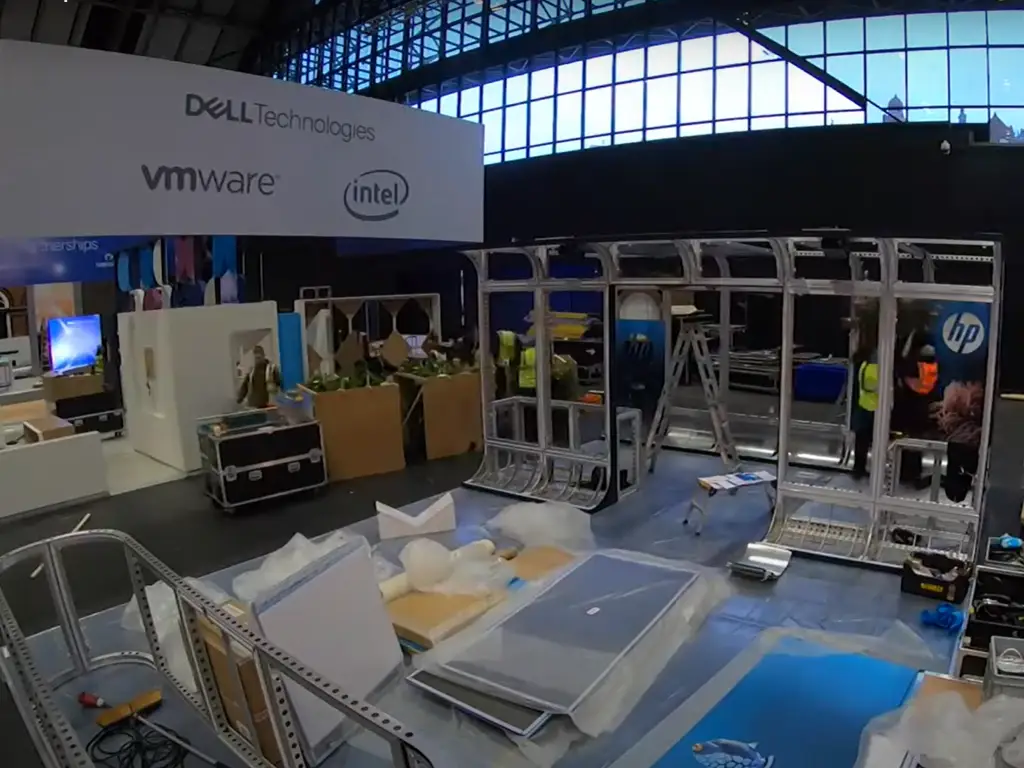
Measuring Success: Analyzing & Optimizing Future Shows
While most people think that the final step in a trade show event is to dismantle the booth, the last phase is actually to extract insights from booth performance and apply them strategically for future shows. This sort of approach provides a competitive edge as it differentiates a single attempt to display from a successful exhibition program that relies on self-reinforcing mechanisms.
- Evaluating Performance: KPIs (Key Performance Indicators). Lead count alone is not a meaningful metric. Expanded criteria include:
- Booth Visitor Quality & Quantity: What is the total number of people who visited? What is the percentage of those who are within the targeted demographic?
- Brand Recall & Awareness:Execute surveys before and after the show, or track mentions on social media and look for spikes in traffic to your website.
- Engagement Levels: Monitor how users interact with demos, content pieces, and conversations.
- Media Coverage:Was any press or industry influencer present at your booth?
- Staff Performance: Collect insights and assess from the rest of the team.
- Data Analysis: Establish a thorough system for capturing and evaluating all metrics, including lead qualification forms, CRM entries, website analytics, and social media engagement. Look for patterns, identify your most effective strategies, and define areas for development.
- Team Debrief & Learnings: Hold a post-show meeting with the complete exhibiting team to gather all insights and discuss what went well and what challenges were encountered during the show. Record all lessons learned, documenting both positive and negative outcomes.
- Continuous Optimization: Use insights gained to modify the strategy set for future trade shows; these include changing the core audience, redesigning the booth, changing the interactive components, training the staff better. Every show is a chance to learn and enhance your presence.
Transforming how you set up a booth at a trade show by using a holistic, data-based approach equips you to change the instinctive participation into a calculated participation that can ensure profit. You don’t find success; you craft, structure, and design it in a systematic manner. Let your next trade show be one that showcases your execution elegance and tactical intelligence, and shows the world what superb strategy is all about.

